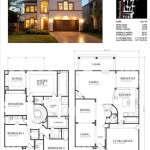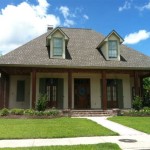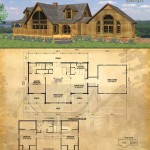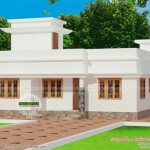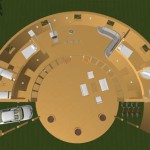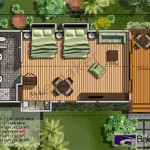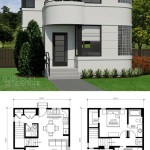Hay Bale House Plans: An Eco-Friendly and Sustainable Building Solution
Hay bale houses are gaining popularity as an eco-friendly and sustainable building method. These homes offer numerous environmental benefits, high energy efficiency, and a unique aesthetic appeal. If you're considering building a hay bale house, it's essential to understand the key aspects of hay bale house plans to ensure a successful construction process.
1. Material Considerations
The choice of hay is crucial for hay bale houses. Choose dry, long-stemmed hay, such as rye, wheat, or oat, that has not been treated with chemicals. The bales should be uniform in size and have a moisture content below 20%. Ensure the hay is free of pests and mold to prevent structural issues.
2. Foundation and Soil Preparation
Hay bale houses typically require a strong foundation to support the heavy weight of the bales. Consider using a concrete slab, pier and beam, or rammed earth foundation. The soil beneath the foundation should be well-drained and able to handle the weight of the structure.
3. Bale Stacking and Plasting
The bales are stacked in alternating rows, creating a solid and interlocking wall system. The bales are plastered with a mixture of clay and sand to protect them from moisture and pests. The plaster also helps to regulate indoor humidity and temperature.
4. Windows and Doors
Incorporating windows and doors into a hay bale house requires careful planning. Window and door frames must be strong enough to support the weight of the bales. Consider using energy-efficient windows and doors to minimize heat loss and improve insulation.
5. Roof Design
The roof of a hay bale house can be constructed using various materials, such as straw thatch, metal, or shingles. The roof pitch should be steep enough to shed water and snow effectively. Ensure that the roof is well-insulated to minimize heat loss.
6. Interior and Exterior Finishes
The interior of a hay bale house can be finished with a variety of materials, including drywall, plaster, or wood paneling. The exterior can be finished with stucco, siding, or other materials that complement the natural aesthetic of the hay bales.
7. Ventilation and Moisture Control
Proper ventilation is crucial to prevent moisture accumulation and mold growth in a hay bale house. Incorporate ventilation systems, such as passive ventilation or mechanical fans, to ensure adequate air circulation. Additionally, install moisture barriers in areas prone to moisture, such as bathrooms and kitchens.
Conclusion
Hay bale house plans offer a unique and sustainable building solution for eco-conscious individuals. By understanding the essential aspects of hay bale house design and construction, you can create a beautiful and energy-efficient home that will last for generations to come.

Designing And Self Building An Affordable Straw Bale House Planning Help

Straw Bale Houses Howstuffworks

Building With Straw Bales A Comprehensive Guide

The Pros And Cons Of Straw Bale Wall Construction

Scl Straw Bale House Jimmi Pianezzola Architetto Archdaily

Straw Bale House Plans With 1 Level 2 Separated Bedrooms

The Case For Straw Bale Houses Fine Homebuilding

Designing And Self Building An Affordable Straw Bale House Planning Help

Arkin Tilt Architects To Make Plan Sets For Eight Straw Bale Homes Available Free Victims Of Wildfires

Straw Bale Home Construction

